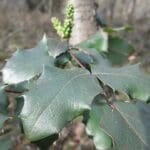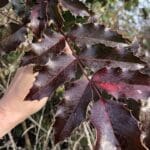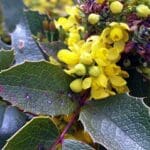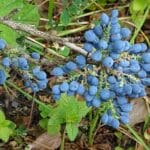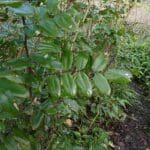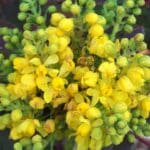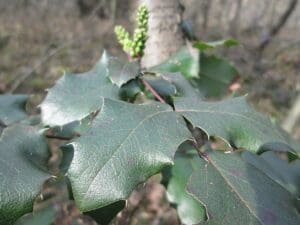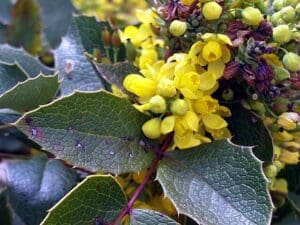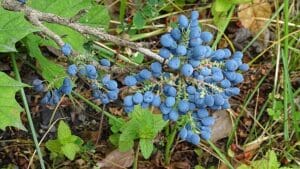Mahonia / Spring / Summer / Autumn / Winter / Edible
Common Names
Mahonia, Oregon Grape, Holly -leaved barberry
Botanical Name
Mahonia Aquifolium
Scientific Classification
Kingdom – Plantae
Order –Rununculaes
Family – Berberidaceae
Physical Characteristics for Mahonia
Leaves
Pinnate leaves up to 30cm long, each leaf is made up of spiny leaflets which resemble Holly.
Flowers
The yellow flowers grow in dense clusters.
Fruit
Spherical, dark blue berries.
Stem/Bark
Brown, grey, corky texture.
Habitat
Mainly found planted in parks and gardens but it can be found in the wild as an escapee.
Known Hazards
Mahonia and other plants containing Berberine should be avoided during pregnancy and breastfeeding. Avoid if you have a over active thyroid gland. High doses cause vomiting, lowered blood pressure, reduced heart rate, lethargy, nose bleed, skin & eye irritation and kidney infection.
Could be Confused with
Holly (Ilex Aquifolium) can look similar but its fruits are orange to red.
Edible Uses
The berries when ripe are still quite tart but when cooked other sweeter fruits or sugar/honey make a delicious compote.
The flowers raw are nice as a garnish or just eaten on their own.
Notes on Herbal uses
The plant contains berberine and reportedly has antimicrobial properties.
Mahonia has been used for centuries in traditional Chinese medicine to treat numerous conditions, including psoriasis, stomach issues, heartburn, and low mood.
Extra notes from the Foragers
The inner bark of the larger stems and roots of Oregon grape yield a yellow dye. The berries contain a dye that can be purple, blue, pink, or green depending on the pH of water used.



